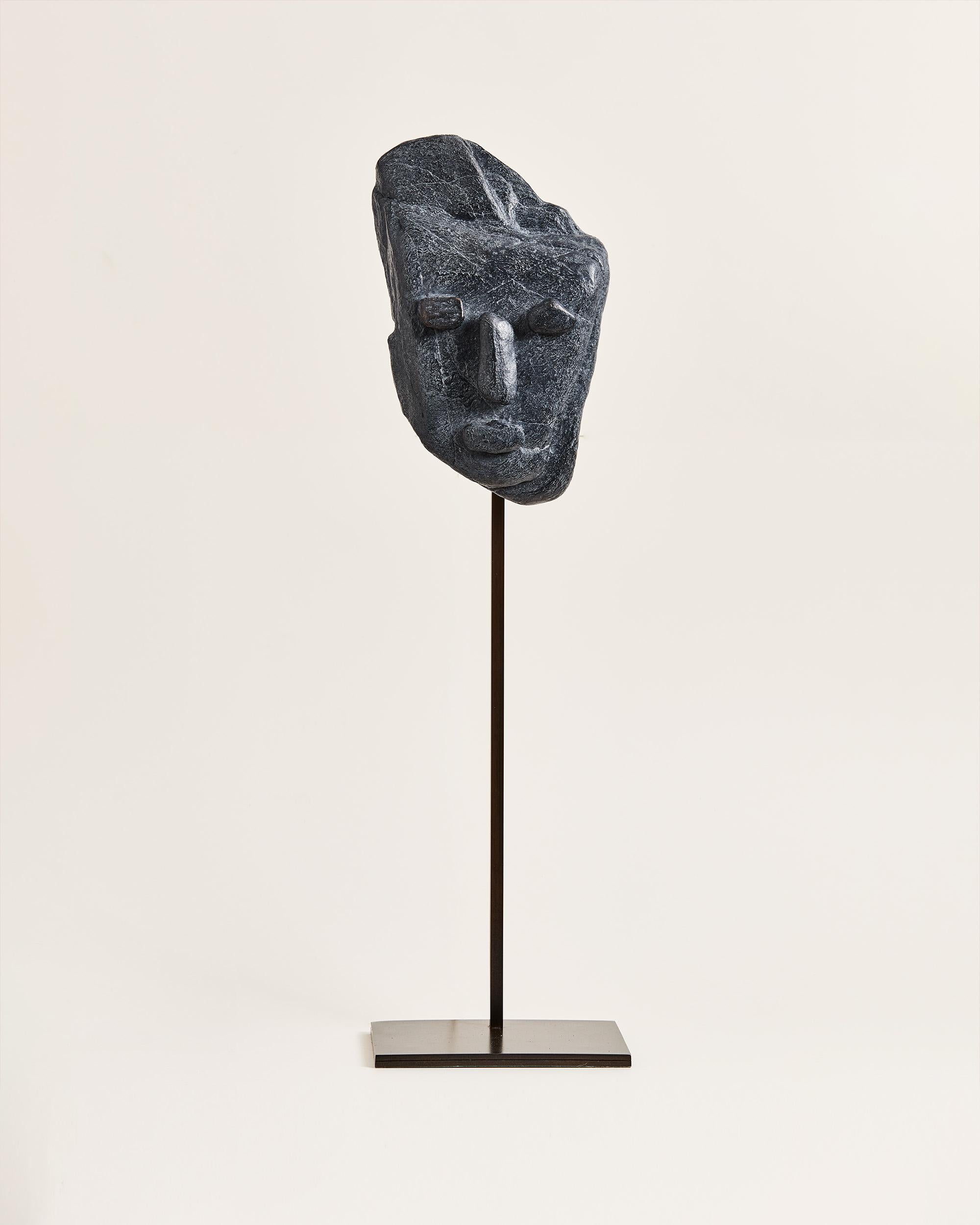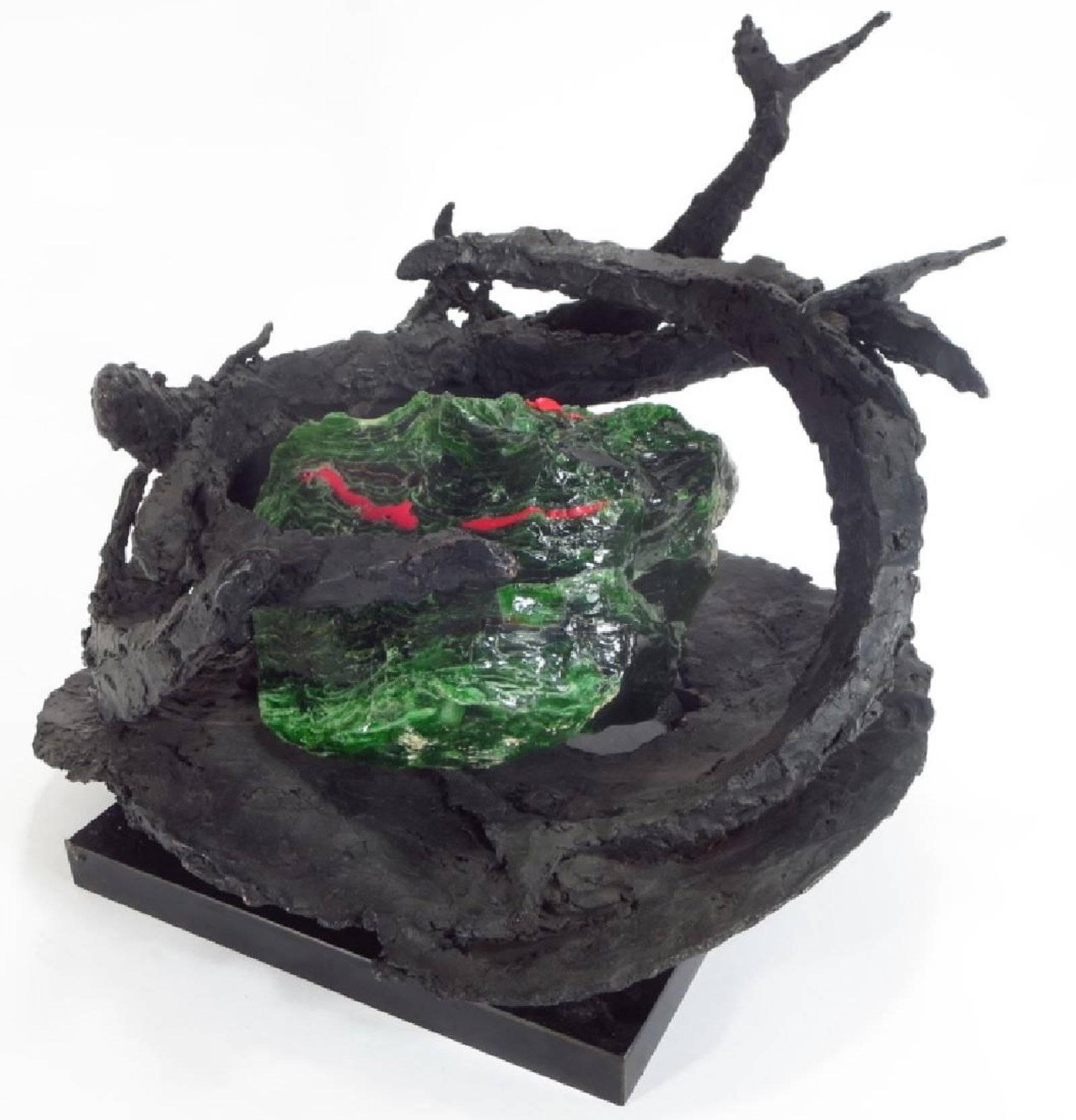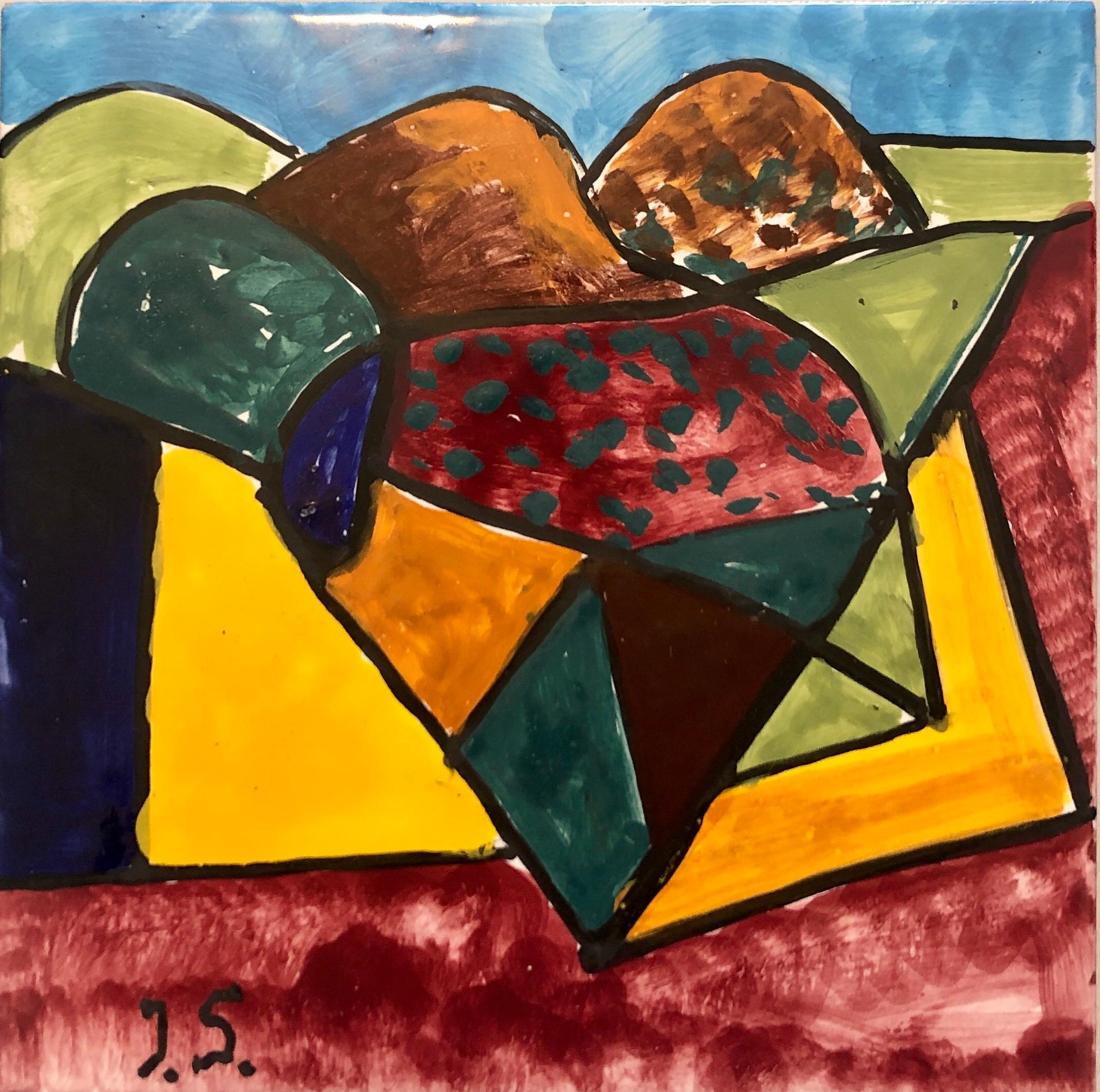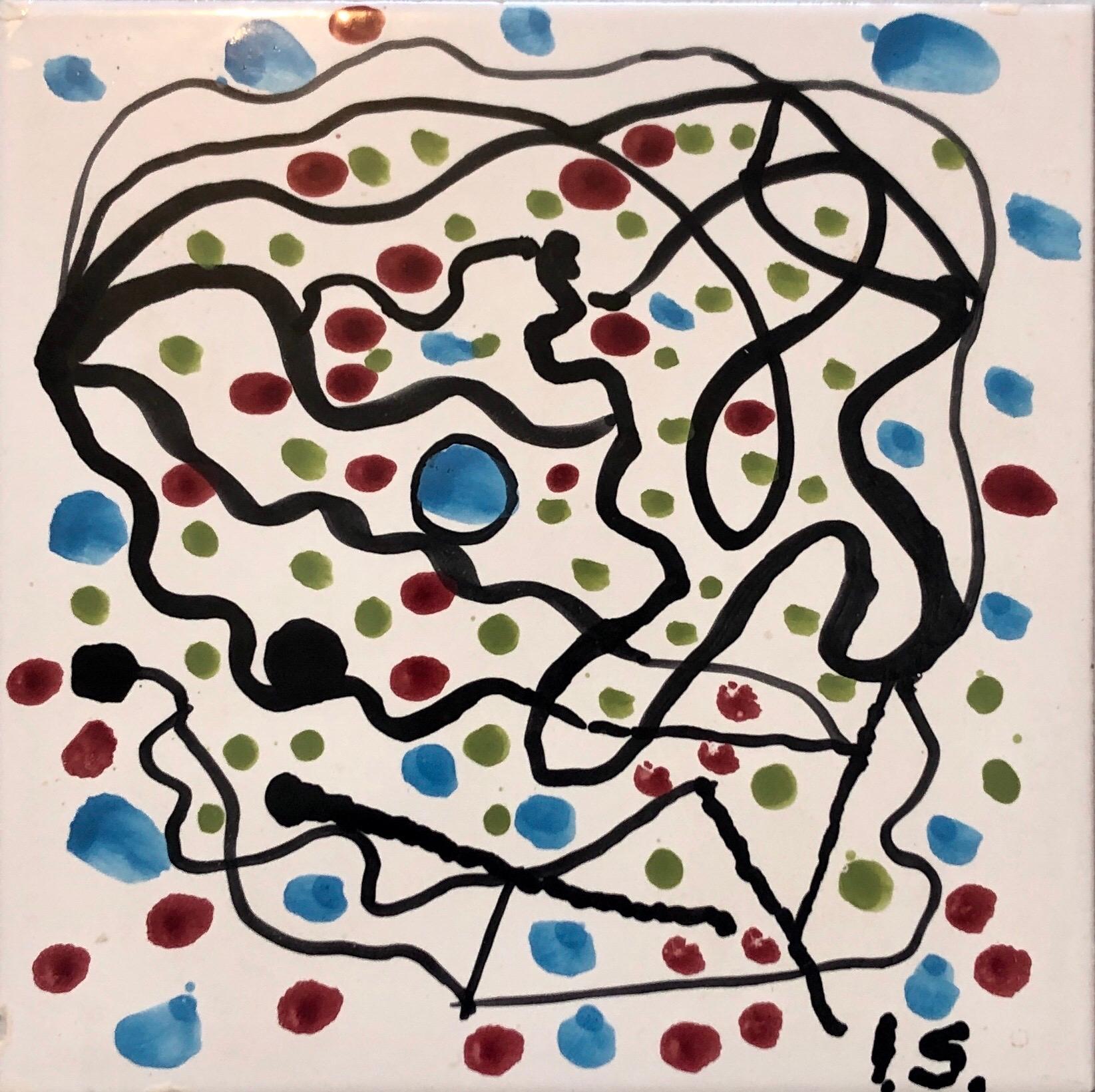Items Similar to Boite empreinte - Contemporary Bronze abstract Sculpture
Want more images or videos?
Request additional images or videos from the seller
1 of 6
Pascale HamelinBoite empreinte - Contemporary Bronze abstract Sculpture2014
2014
About the Item
Sculpture en bronze de l'artiste Pascale Hamelin.
Pascale Hamelin est une sculptrice française.
Ses visages et ses formes racontent le souvenir du passé, du non-dit, du devoir de mémoire.
Fonte à la fonderie Avangini.
- Creator:Pascale Hamelin (French)
- Creation Year:2014
- Dimensions:Height: 13.39 in (34 cm)Width: 3.94 in (10 cm)Depth: 3.94 in (10 cm)
- Medium:
- Movement & Style:
- Period:
- Condition:
- Gallery Location:PARIS, FR
- Reference Number:1stDibs: LU2331211660162
About the Seller
5.0
Vetted Seller
These experienced sellers undergo a comprehensive evaluation by our team of in-house experts.
Established in 2022
1stDibs seller since 2023
- ShippingRetrieving quote...Ships From: Paris, France
- Return PolicyA return for this item may be initiated within 14 days of delivery.
More From This SellerView All
- Bronze Grand Bénatien - Contemporary Bronze Portrait Sculpture, 2015Located in PARIS, FRSculpture en bronze sur socle par l'artiste Pascale Hamelin. Pascale Hamelin est une sculptrice française. Ses visages et ses formes racontent le souv...Category
21st Century and Contemporary Neo-Expressionist Abstract Sculptures
MaterialsBronze
- Boite empreinte - Contemporary Bronze abstract Sculpture, 2015Located in PARIS, FRSculpture en bronze de l'artiste Pascale Hamelin. Pascale Hamelin est une sculptrice française. Ses visages et ses formes racontent le souvenir du pass...Category
2010s Neo-Expressionist Abstract Sculptures
MaterialsBronze
- Masque origine - Contemporary Ceramic portrait sculptureLocated in PARIS, FRSculpture murale par l'artiste Pascale Hamelin. Pascale Hamelin est une sculptrice française. Ses visages et ses formes racontent le souvenir du passé,...Category
2010s Neo-Expressionist Abstract Sculptures
MaterialsCeramic
- Masque Empathie - Contemporary Ceramic Portrait SculptureLocated in PARIS, FRSculpture murale de l'artiste Pascale Hamelin. Pascale Hamelin est une sculptrice française. Ses visages et ses formes racontent le souvenir du passé,...Category
2010s Neo-Expressionist Figurative Sculptures
MaterialsCeramic
- Larme de vigilant - Contemporary Ceramic Portrait SculptureLocated in PARIS, FRSculpture murale par l'artiste Pascale Hamelin. Pascale Hamelin est une sculptrice française. Ses visages et ses formes racontent le souvenir du passé,...Category
2010s Neo-Expressionist Abstract Sculptures
MaterialsCeramic
- Bronze Eve - Contemporary Bronze Portrait sculpture, 2015Located in PARIS, FRSculpture en bronze sur socle par l'artiste Pascale Hamelin. Pascale Hamelin est une sculptrice française. Ses visages et ses formes racontent le souv...Category
21st Century and Contemporary Art Deco Abstract Sculptures
MaterialsBronze
You May Also Like
- Abstract Sculpture 'Ten Fathoms' (Swimming Fish) Bronze with Glass Unique PieceBy Margaret Peggy ReventlowLocated in Surfside, FLMargaret Reventlow, American born London, 1915 - 2014, "Ten Fathoms Deep", (swimming fish) bronze with green and red slag glass, unsigned, with artist n...Category
20th Century Neo-Expressionist Abstract Sculptures
MaterialsBronze
- "Il narratore" by Enzio Wenk, 2020 - Pink Wooden Sculpture, Neo-ExpressionismBy Enzio WenkLocated in Bresso, ITTranslated title: "The narrator". Enamel, wood, charcoal and gauze.Category
2010s Neo-Expressionist Abstract Sculptures
MaterialsEnamel
- Abstract Painted Ceramic Tile Pop Art Painting Italian Neo Figurative PaintingBy Italo ScangaLocated in Surfside, FLThis painted ceramic tile by Italo Scanga, epitomizes the characteristics of his oeuvre. Polychrome and vibrant art from the Memphis Milano era. This is signed with his initials. This is reminiscent of the mid century work of Jean Lurcat and Jean Picart le Doux. Italo Scanga (June 6, 1932 - July 7, 2001), an Italian-born American artist, was known for his sculptures, prints and, paintings, mostly created from found objects. In his youth in Calabria, Italy he worked as a cabinetmaker's apprentice and studies sculpture with a man who carved statues of saints. Italo Scanga was an innovative neo Dada, neo-Expressionist, and neo-Cubist multimedia artist who made assemblage, collage, sculptures of ordinary objects and created prints, glass, and ceramic works. Modern Italian abstract geometric folk art. Scanga's materials included natural objects like branches and seashells, as well as kitsch figurines, castoff musical instruments and decorative trinkets salvaged from flea markets and thrift shops. He combined these ingredients into free-standing assemblages, which he then painted. Although visually ebullient, the results sometimes referred to gruesome episodes from Greek mythology or the lives and deaths of martyred saints. He considered his artistic influences to be sweepingly pan-cultural, from African sculpture to Giorgio de Chirico. He often collaborated with the sculptor Dale Chihuly, who was a close friend. Constructed of wood and glass, found objects or fabric, his ensembles reflect a trio of activities—working, eating, and praying. These activities dominate the lives of those who live close to the land, but they are also activities that are idealized by many who contemplate, romantically, a simpler, bucolic life. Italo graduated from Michigan State University where he befriended fellow artists Richard Merkin and David Pease. He studied under Lindsey Decker who introduces him to welding and sculpture after his initial interest in photography. Also studies with Charles Pollock, the brother of Abstract Expressionist Jackson Pollock. His first teaching job was at University of Wisconsin (through 1964). where he met Harvey Littleton, a fellow instructor. He later moves to Providence, Rhode Island,I to teach at Rhode Island School of Design (RISD). Is colleagues with artists Richard Merkin and Hardu Keck. Starts a correspondence with HC Westermann. Spends summers teaching at Brown University; colleague of Hugh Townley. Moves to State College, PA, and teaches at Pennsylvania State University for one year. Meets artists Juris Ubans, Harry Anderson, Richard Frankel, and Richard Calabro, who remain friends throughout his career. 1967: David Pease helps him get a tenure track position at Tyler School of Art in Philadelphia, PA, . Artists he works closely with include Ernest Silva, Lee Jaffe, Donald Gill, and William Schwedler. Meets graduate student Dale Chihuly while lecturing at RISD and develops a lifelong friendship. 1969: One person exhibition, Baylor Art Gallery, Baylor University, Waco, TX. Works very closely with students Larry Becker and Heidi Nivling (who later run a gallery in Philadelphia, PA), and Harry Anderson. Welcomes many artists into his home including Donald Judd, Dan Flavin, Bruce Nauman (a former student), Vito Acconci, Ree Morton and Rafael Ferrer. 1973: "Saints Glass" at 112 Greene Street Gallery, NYC. Installation at the Institute of Contemporary Art at University of Pennsylvania, Philadelphia, PA. Meets Gordon Matta Clark and contributes to an artist cookbook. Goes to Pilchuck Glass School, Stanwood, WA, founded by Dale Chihuly, as a visiting artist. He continues to work there annually through 2001. Works over the years with Pilchuck artists Richard Royal, Seaver Leslie, Jamie Carpenter, Joey Kirkpatrick, Flora Mace, Robbie Miller, Billy Morris, Buster Simpson, Toots Zynsky, Howard Ben Tre...Category
1980s Neo-Expressionist Abstract Sculptures
MaterialsEnamel
- Abstract Painted Ceramic Tile Pop Art Painting Italian Neo Figurative PaintingBy Italo ScangaLocated in Surfside, FLThis painted ceramic tile by Italo Scanga, epitomizes the characteristics of his oeuvre. Polychrome and vibrant art from the Memphis Milano era. This is signed with his initials. This is reminiscent of the mid century work of Jean Lurcat and Jean Picart le Doux. Italo Scanga (June 6, 1932 - July 7, 2001), an Italian-born American artist, was known for his sculptures, prints and, paintings, mostly created from found objects. In his youth in Calabria, Italy he worked as a cabinetmaker's apprentice and studies sculpture with a man who carved statues of saints. Italo Scanga was an innovative neo Dada, neo-Expressionist, and neo-Cubist multimedia artist who made assemblage, collage, sculptures of ordinary objects and created prints, glass, and ceramic works. Modern Italian abstract geometric folk art. Scanga's materials included natural objects like branches and seashells, as well as kitsch figurines, castoff musical instruments and decorative trinkets salvaged from flea markets and thrift shops. He combined these ingredients into free-standing assemblages, which he then painted. Although visually ebullient, the results sometimes referred to gruesome episodes from Greek mythology or the lives and deaths of martyred saints. He considered his artistic influences to be sweepingly pan-cultural, from African sculpture to Giorgio de Chirico. He often collaborated with the sculptor Dale Chihuly, who was a close friend. Constructed of wood and glass, found objects or fabric, his ensembles reflect a trio of activities—working, eating, and praying. These activities dominate the lives of those who live close to the land, but they are also activities that are idealized by many who contemplate, romantically, a simpler, bucolic life. Italo graduated from Michigan State University where he befriended fellow artists Richard Merkin and David Pease. He studied under Lindsey Decker who introduces him to welding and sculpture after his initial interest in photography. Also studies with Charles Pollock, the brother of Abstract Expressionist Jackson Pollock. His first teaching job was at University of Wisconsin (through 1964). where he met Harvey Littleton, a fellow instructor. He later moves to Providence, Rhode Island,I to teach at Rhode Island School of Design (RISD). Is colleagues with artists Richard Merkin and Hardu Keck. Starts a correspondence with HC Westermann. Spends summers teaching at Brown University; colleague of Hugh Townley. Moves to State College, PA, and teaches at Pennsylvania State University for one year. Meets artists Juris Ubans, Harry Anderson, Richard Frankel, and Richard Calabro, who remain friends throughout his career. 1967: David Pease helps him get a tenure track position at Tyler School of Art in Philadelphia, PA, . Artists he works closely with include Ernest Silva, Lee Jaffe, Donald Gill, and William Schwedler. Meets graduate student Dale Chihuly while lecturing at RISD and develops a lifelong friendship. 1969: One person exhibition, Baylor Art Gallery, Baylor University, Waco, TX. Works very closely with students Larry Becker and Heidi Nivling (who later run a gallery in Philadelphia, PA), and Harry Anderson. Welcomes many artists into his home including Donald Judd, Dan Flavin, Bruce Nauman (a former student), Vito Acconci, Ree Morton and Rafael Ferrer. 1973: "Saints Glass" at 112 Greene Street Gallery, NYC. Installation at the Institute of Contemporary Art at University of Pennsylvania, Philadelphia, PA. Meets Gordon Matta Clark and contributes to an artist cookbook. Goes to Pilchuck Glass School, Stanwood, WA, founded by Dale Chihuly, as a visiting artist. He continues to work there annually through 2001. Works over the years with Pilchuck artists Richard Royal, Seaver Leslie, Jamie Carpenter, Joey Kirkpatrick, Flora Mace, Robbie Miller, Billy Morris, Buster Simpson, Toots Zynsky, Howard Ben Tre...Category
1980s Neo-Expressionist Abstract Sculptures
MaterialsEnamel
- Standing FigureLocated in Wilton Manors, FLTom Cramer (b.1960). Standing Figure, 1998. Carved wood and polymer paint. Measures 12 inches high. Excellent condition. Signed and dated under base. Tom Cramer is an American artist working in Portland, Oregon noted for his intricately carved and painted wood reliefs and ubiquity throughout the city of Portland. Often called the unofficial Artist Laureate of Portland,[2] Cramer is one of the most visible and successful artists in the city. The influences on his work are both organic and technological. He is widely collected and is in many prominent west coast museum and private collections. He is in the permanent collections of the Portland Art Museum[3] in Portland Oregon, the Halle Ford Museum in Salem Oregon, the Jordan Schnitzer Museum in Eugene, Oregon, the Boise Art Museum in Idaho. Cramer made a name for himself in the 1980s and 1990s becoming a bridge between historical Oregon artists like Clifford Gleason and Milton Wilson...Category
Late 20th Century Neo-Expressionist Figurative Sculptures
MaterialsLatex, Wood
- "Zofia" Unique Glass Blown Bunny Sculpture in an Iridescent Purple ColorBy Hunt SlonemLocated in New York, NYEver expansive in his Animalia quest, renowned artist Hunt Slonem continues to boldly pursue his unique vision. Divining new forms for his aesthetic muses in hand-blown glass, neon and other illuminating raw materials, the artist’s impressive career spanning almost five decades enters a new phase. Bunnies. This piece depicts a gestural figure of purple iridescent bunny. This is a one of a kind piece. Illuminating and awe inspiring, Hunts new Glass Blown Sculptures...Category
2010s Neo-Expressionist Figurative Sculptures
MaterialsGlass
Recently Viewed
View AllMore Ways To Browse
Bronze De
Bronze L Sculpture
Sculpture En Bronze
Bronze Souvenir
Pascale Hamelin
Abstract Bird Wood Sculpture
Large Outdoor Metal Art
Western Wall Sculpture
Mountain Wall Sculpture
Plexiglas Wall Sculpture
Ted Design
Colorful Wood Wall Sculpture
Geometric Metal Wall Sculpture
Huge Abstract Sculpture
Balance Gravity
Monumental Outdoor
Colorful Dimensional Wall Art
Large Outdoor Steel Sculptures





